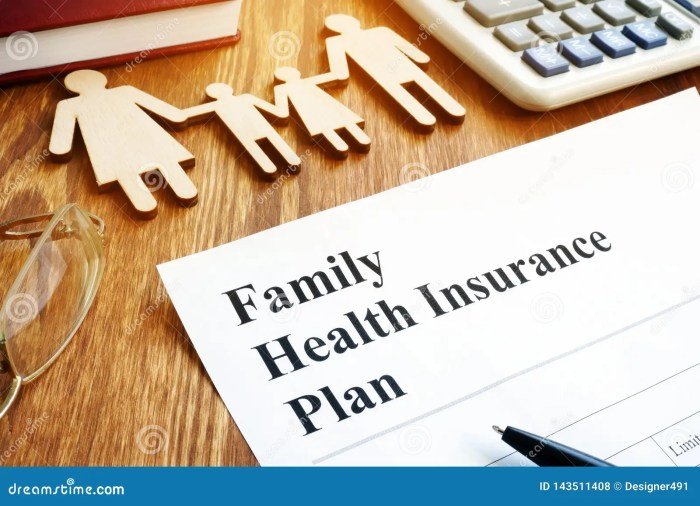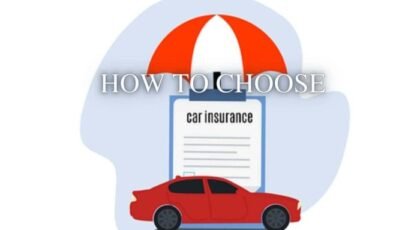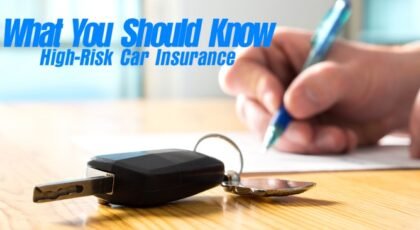Family Car Insurance Choosing the Right Coverage
Car Insurance for Families: How to Choose the Right Coverage in America is a crucial topic for every family. Navigating the world of car insurance can feel overwhelming, with numerous coverage options, varying premiums, and complex terminology. This guide simplifies the process, providing clear explanations and practical advice to help families find the best car insurance to fit their needs and budget.
We’ll explore different coverage types, factors influencing premiums, ways to save money, and how to handle accidents.
From understanding liability and collision coverage to the impact of driving history and choosing the right deductible, we’ll cover everything you need to know to make informed decisions about your family’s car insurance. We’ll also delve into the benefits of bundling policies, exploring family discounts and strategies for finding affordable coverage. By the end, you’ll be confident in your ability to choose the right car insurance protection for your family.
Table of Contents
ToggleTypes of Car Insurance Coverage for Families
Choosing the right car insurance for your family can feel overwhelming, but understanding the different types of coverage available is the first step to finding the right protection. This section will break down key coverages to help you make informed decisions.
Liability Coverage
Liability coverage protects you financially if you cause an accident that injures someone or damages their property. It’s typically broken down into bodily injury liability and property damage liability. Bodily injury liability covers medical bills, lost wages, and pain and suffering for anyone injured in an accident you caused. Property damage liability covers the cost of repairing or replacing the other person’s vehicle or property.
For example, if you rear-end another car, causing $5,000 in damages and injuring the driver who incurs $10,000 in medical bills, your liability coverage would help pay for these expenses. The limits of your liability coverage are expressed as numbers, such as 25/50/25, meaning $25,000 per person for bodily injury, $50,000 total for bodily injury per accident, and $25,000 for property damage.
Higher limits provide greater protection, but also come with higher premiums.
Uninsured/Underinsured Motorist Coverage
This coverage is crucial for families. It protects you and your family if you’re involved in an accident caused by an uninsured or underinsured driver. Many drivers operate without adequate insurance, and in the event of an accident, this coverage will help pay for your medical bills, lost wages, and vehicle repairs, even if the other driver is at fault and lacks sufficient insurance.
For example, imagine you’re stopped at a red light and are rear-ended by an uninsured driver. Your medical bills and vehicle repair costs could be substantial. Uninsured/underinsured motorist coverage would help offset these expenses.
Collision and Comprehensive Coverage
Collision coverage pays for repairs to your vehicle if it’s damaged in an accident, regardless of who is at fault. Comprehensive coverage protects your vehicle against damage from events other than collisions, such as theft, vandalism, fire, hail, or even hitting an animal. For families, these coverages are highly recommended, especially if you have a newer vehicle or significant loans outstanding.
Finding the right car insurance for your family can be tricky, balancing coverage needs with budget concerns. If you have college-aged kids driving, remember to check for potential savings! For example, you might find great deals by looking into Top Car Insurance Discounts for College Students in America , which could significantly lower your overall premiums.
Once you’ve explored those options, you can better assess the best coverage for your entire family.
Imagine a tree falls on your car during a storm; comprehensive coverage would handle the repair costs. If you’re in a fender bender, collision coverage would take care of the damage to your vehicle, regardless of fault.
Finding the right car insurance for your family can be tricky, especially with so many options. You’ll need to consider factors like the age of your vehicles; for older cars, check out this helpful guide on why comprehensive coverage is often a smart choice: Why You Should Consider Comprehensive Car Insurance for Older Cars in the U.S.
. Ultimately, balancing cost and protection is key to securing the best car insurance for your family’s needs.
| Coverage Type | Description | Cost Factors | Example Scenario |
|---|---|---|---|
| Liability | Covers injuries and damages you cause to others. | Driving record, location, vehicle type, coverage limits. | You cause an accident injuring someone and damaging their car. |
| Uninsured/Underinsured Motorist | Protects you if hit by an uninsured or underinsured driver. | Driving record, location, vehicle type, coverage limits. | An uninsured driver causes an accident injuring you and damaging your car. |
| Collision | Covers damage to your car in an accident, regardless of fault. | Driving record, location, vehicle type, deductible. | You are in a fender bender, damaging your car. |
| Comprehensive | Covers damage to your car from non-collision events (theft, fire, etc.). | Driving record, location, vehicle type, deductible. | A tree falls on your parked car during a storm. |
Factors Affecting Car Insurance Premiums for Families
Choosing the right car insurance for your family involves understanding the factors that influence your premium. Insurance companies use a complex formula to assess risk, and this ultimately determines how much you’ll pay. Several key elements contribute to this calculation, affecting your monthly or annual cost.Several key factors influence the premiums insurance companies charge families. These factors are carefully weighed to assess the level of risk associated with insuring a particular family.
Understanding these factors can help you make informed decisions to potentially lower your costs.
Driving History
Your driving record significantly impacts your car insurance premiums. A clean driving history with no accidents or traffic violations will result in lower premiums. Conversely, accidents, speeding tickets, or DUI convictions will increase your premiums, sometimes substantially. The severity of the incident also plays a role; a minor fender bender will have less impact than a serious accident resulting in injuries or significant property damage.
For example, a driver with three speeding tickets in the past three years will likely pay more than a driver with a spotless record. Insurance companies often use a points system to track driving infractions, with each point leading to a premium increase.
Age of Drivers, Car Insurance for Families: How to Choose the Right Coverage in America
The age of the drivers in your household is another crucial factor. Younger drivers, particularly those under 25, are statistically more likely to be involved in accidents, leading to higher premiums. This is because they often have less driving experience and may take more risks. As drivers age and gain experience, their premiums typically decrease. Conversely, older drivers, especially those over 65, may also face higher premiums due to potential health concerns that could affect their driving abilities.
Insurance companies use actuarial data to analyze accident rates across different age groups to set premiums accordingly.
Location
Where you live significantly impacts your car insurance rates. Areas with high crime rates, a higher frequency of accidents, or more expensive car repairs tend to have higher insurance premiums. This is because insurance companies are assessing the likelihood of claims in your specific area. For example, living in a densely populated urban area with congested roads might lead to higher premiums compared to a rural area with fewer vehicles and lower accident rates.
Insurance companies use geographic data and claim history to determine risk levels associated with different locations.
Car Model and Safety Ratings
The type of car you drive also affects your premiums. Insurance companies consider the car’s make, model, and safety ratings. Cars with a history of high repair costs or frequent theft will generally lead to higher premiums. Conversely, cars with advanced safety features and high safety ratings from organizations like the IIHS (Insurance Institute for Highway Safety) often receive lower premiums due to a reduced risk of accidents and injuries.
For example, a luxury sports car will likely have higher insurance premiums compared to a smaller, more fuel-efficient car with good safety ratings. The cost of parts and repairs for a particular model also influences premium calculations.
Ways to Reduce Car Insurance Premiums
Several strategies can help families reduce their car insurance premiums. Proactive steps can significantly lower your costs.
- Maintain a clean driving record: Avoid accidents and traffic violations.
- Bundle insurance policies: Combine your car insurance with home or renters insurance.
- Increase your deductible: A higher deductible means lower premiums but higher out-of-pocket costs in case of an accident.
- Shop around and compare quotes: Different insurance companies offer varying rates.
- Consider safety features: Cars with advanced safety features often qualify for discounts.
- Take a defensive driving course: Completing a defensive driving course may lead to premium reductions.
- Maintain good credit: In many states, your credit score is a factor in determining your insurance rates.
Choosing the Right Deductible for Family Car Insurance
Choosing the right deductible is a crucial decision when selecting car insurance for your family. The deductible is the amount you pay out-of-pocket before your insurance coverage kicks in after an accident. Understanding how deductibles work and their impact on your premiums is key to finding the right balance between cost and risk.Your deductible directly affects your insurance premium; a higher deductible generally leads to a lower premium, and vice versa.
This is because a higher deductible means the insurance company pays out less frequently, reducing their risk and allowing them to offer lower premiums. However, a higher deductible also means you’ll have to pay more out-of-pocket if you need to file a claim.
Deductible Amounts and Their Impact
The amount of your deductible significantly influences both your monthly premium and your potential out-of-pocket expenses in the event of an accident. Let’s consider three common deductible levels: low, medium, and high. A low deductible might be $250 or $500, a medium deductible could range from $500 to $1000, and a high deductible might be $1000 or more.
Finding the right car insurance for your family can be tricky, especially with so many options available in America. To help navigate the complexities of coverage and pricing, you might find resources like those offered by AdminLurp beneficial. Ultimately, understanding your family’s needs and comparing quotes from different insurers is key to securing the best car insurance protection.
Examples of Deductible Impact on Out-of-Pocket Expenses
Imagine you’re involved in a collision resulting in $5,000 in damages. With a $250 deductible, you’d pay $250, and your insurance would cover the remaining $4,750. However, with a $1000 deductible, your out-of-pocket expense would jump to $1000, leaving your insurance to pay $4000. The difference in your immediate cost is substantial.
Choosing a Deductible Based on Financial Situation
Selecting the right deductible depends heavily on your family’s financial situation. If you have a substantial emergency fund and can comfortably absorb a higher out-of-pocket expense, a higher deductible might be advantageous due to the lower premiums. Conversely, if you have limited savings, a lower deductible offers greater financial protection, even if it means paying more for your insurance.
| Deductible Amount | Premium Impact | Out-of-Pocket Cost (Example: $5000 damage) | Recommendation |
|---|---|---|---|
| $250 (Low) | Higher Premium | $250 | Suitable for families with limited savings or risk aversion. |
| $500 (Medium) | Moderate Premium | $500 | A good balance between cost and risk for many families. |
| $1000 (High) | Lower Premium | $1000 | Best for families with a strong emergency fund and higher risk tolerance. |
Bundling Insurance Policies for Families
Bundling your car insurance with other types of insurance, such as homeowners or renters insurance, can be a smart financial move for families. It often leads to significant savings and simplifies the management of your insurance needs. By combining policies with the same provider, you can leverage discounts and streamline your billing process.Many insurance companies offer discounts for bundling policies.
This is because they recognize that customers with multiple policies are less likely to switch providers, representing a more stable and predictable revenue stream for the company. This stability allows them to offer lower premiums as an incentive.
Potential Savings from Bundling Insurance
Bundling car insurance with other insurance types frequently results in substantial savings. The exact amount varies depending on the insurer, the specific policies bundled, and your individual risk profile. However, it’s not uncommon to see discounts ranging from 10% to 25% or even more on your overall premium. For example, a family paying $1200 annually for car insurance and $600 annually for homeowners insurance might see a 15% discount on the combined premium, saving them $270 per year.
Finding the right car insurance for your family can be tricky, especially with varying needs and driving records. If you have a teen driver or someone with past accidents, you’ll need to consider more than just basic coverage. For those with less-than-perfect driving histories, checking out resources like Best Car Insurance Policies for High-Risk Drivers in America can be really helpful.
Understanding these options will help you make informed decisions about the best family plan, ensuring everyone is properly protected.
Another example could be a family saving $150 annually on a bundled policy, compared to purchasing each policy individually. These savings can add up significantly over time.
Obtaining Quotes for Bundled Insurance Policies
The process of obtaining quotes for bundled insurance policies is relatively straightforward. Most major insurance companies allow you to get quotes online through their websites. You will need to provide information about your vehicles, driving history, your home (for homeowners or renters insurance), and other relevant details. Alternatively, you can contact insurance providers directly by phone or visit their local offices to receive personalized quotes.
Remember to compare quotes from multiple insurers to ensure you’re getting the best possible deal.
Finding the right car insurance for your family can be tricky! A big part of that is understanding your coverage options. To help you decide, it’s crucial to know the difference between liability and full coverage; check out this helpful guide: What’s the Difference Between Full Coverage and Liability Insurance in the U.S.? Once you grasp that, you’ll be much better equipped to choose a policy that protects your family and your budget.
Comparing Bundled Insurance Options
To effectively compare bundled insurance options, follow these steps:
- Gather Information: Collect information about your current car insurance coverage, as well as your home insurance needs (homeowners or renters). Note your current premiums and deductibles.
- Obtain Quotes: Get quotes from at least three different insurance providers, specifying that you’d like to bundle your car and home insurance. Make sure the quotes are for comparable coverage levels.
- Compare Coverage: Carefully compare the coverage offered by each provider. Ensure that the bundled policy provides adequate protection for your family’s needs.
- Analyze Pricing: Compare the total cost of the bundled policies from each provider. Don’t just focus on the discount percentage; compare the final premiums.
- Review Customer Service Ratings: Check online reviews and ratings for each insurance company to assess their customer service reputation. This is crucial in case you need to file a claim.
- Make Your Decision: Based on your analysis of coverage, pricing, and customer service, choose the bundled insurance policy that best suits your family’s needs and budget.
Understanding Family Discounts on Car Insurance: Car Insurance For Families: How To Choose The Right Coverage In America
Securing affordable car insurance is a priority for families, and thankfully, many companies offer discounts designed to reward responsible driving and family-oriented lifestyles. Understanding these discounts can significantly reduce your premiums. This section will explore common family discounts, comparing and contrasting their eligibility requirements and benefits.
Common Family Discounts
Many car insurance providers offer a variety of discounts tailored to families. These discounts recognize that families often exhibit lower-risk driving behaviors and represent a stable customer base. Some of the most common include multi-car discounts, good student discounts, and sometimes even discounts for having multiple drivers within a household who maintain clean driving records. These discounts can significantly reduce the overall cost of insuring multiple vehicles and drivers.
Multi-Car Discounts
Multi-car discounts are perhaps the most prevalent family discount. Insurance companies reward families insuring two or more vehicles under the same policy with a reduced rate on each vehicle. This discount acknowledges the reduced risk associated with insuring multiple vehicles under one policy, simplifying administration and potentially indicating a greater commitment to responsible driving practices within the family.
For example, a family with two cars might receive a 10-15% discount on each vehicle’s premium compared to insuring them separately. The exact percentage varies by insurer and policy specifics.
Good Student Discounts
Good student discounts are offered to policyholders whose children maintain a certain grade point average (GPA) or rank in their class. This discount reflects the insurer’s understanding that good students often demonstrate responsible behavior and a lower likelihood of risky driving habits. Typical requirements include a GPA of 3.0 or higher, or being in the top 20% of a graduating class.
The discount amount can range from 5% to 25% depending on the insurer and the student’s academic achievements. A family with a high-achieving student could see a substantial reduction in their overall premium.
Other Family-Oriented Discounts
Beyond multi-car and good student discounts, some insurers offer additional discounts specific to family situations. These might include discounts for safe driver programs (like defensive driving courses), bundling home and auto insurance, or even discounts for having multiple drivers with clean driving records within the household. The availability of these discounts varies considerably depending on the insurer and the specific policy details.
Applying for Family Discounts
Applying for family discounts is generally a straightforward process. The flowchart below illustrates a typical application procedure.
Applying for and Receiving Family Discounts Flowchart
[Imagine a flowchart here. The flowchart would begin with a box labeled “Contact Your Insurance Provider.” This would lead to two branches: “Already Insured with Multiple Vehicles?” and “Have Eligible Children?” The “Already Insured with Multiple Vehicles?” branch would lead to a box labeled “Automatically Eligible for Multi-Car Discount.” The “Have Eligible Children?” branch would lead to a box labeled “Provide Proof of Good Grades/Academic Standing.” Both branches would converge at a box labeled “Provide Required Documentation (e.g., driver’s licenses, student transcripts).” This would lead to a box labeled “Insurance Provider Reviews Application,” which would lead to two final branches: “Discount Approved” and “Discount Denied (Reason Provided).” ]
Importance of Reviewing Car Insurance Coverage Regularly
Life changes, and so should your car insurance. Regularly reviewing your family’s car insurance policy isn’t just a good idea; it’s crucial for ensuring you have the right coverage at the right price. Failing to do so could leave your family financially vulnerable in the event of an accident or other unforeseen circumstances.Your car insurance needs aren’t static.
As your family grows, your vehicles change, or your financial situation shifts, your insurance policy needs to adapt to reflect these changes. A proactive approach to reviewing your coverage ensures you’re adequately protected and aren’t overpaying for unnecessary coverage or underinsured for potential risks. This process allows you to optimize your policy to best meet your family’s evolving needs and budget.
Situations Requiring Coverage Changes
Several life events necessitate a review of your car insurance policy. For example, adding a new driver to your policy, such as a teenager getting their license, significantly increases your risk profile and likely your premiums. Conversely, if a driver moves out of the household or sells their car, you’ll need to update your policy to reflect these changes.
Similarly, purchasing a new car may require adjustments to your coverage limits or collision and comprehensive coverage. A significant change in your employment status, impacting your income, might also necessitate reviewing your deductible or coverage levels. Finally, moving to a new state requires an immediate policy review as coverage requirements and costs vary considerably across different states.
Steps in Reviewing and Updating Insurance Policies
Reviewing your car insurance policy is a straightforward process. Begin by gathering all relevant policy documents, including your declarations page and any endorsements. Carefully examine your current coverage limits for liability, collision, comprehensive, and uninsured/underinsured motorist coverage. Compare these limits to your current assets and liabilities to ensure they adequately protect your family. Next, contact your insurance provider to discuss any necessary changes.
This may involve adjusting your coverage levels, changing your deductible, or adding or removing drivers from the policy. Finally, obtain a new policy document reflecting the updated information and carefully review it to confirm all changes are accurately recorded.
Checklist for Reviewing Car Insurance
Before you begin your review, prepare a checklist to ensure a thorough assessment. This checklist will help you systematically examine all aspects of your policy.
- Current Coverage Limits: Are your liability, collision, and comprehensive coverage limits still appropriate for your assets and risk profile? Consider increasing limits if your net worth has grown significantly.
- Drivers on the Policy: Are all drivers accurately listed? Have there been any changes in driving records or experience levels that might impact your premiums?
- Vehicles Covered: Does your policy accurately reflect all vehicles owned and regularly driven by members of your household?
- Deductibles: Is your deductible appropriate for your budget and risk tolerance? Raising your deductible can lower your premiums, but be sure you can afford to pay it in the event of a claim.
- Discounts: Are you taking advantage of all available discounts, such as good driver discounts, multi-car discounts, or safe driver programs?
- Policy Expiration Date: Note the date your current policy expires to allow sufficient time for renewal or comparison shopping.
Dealing with Car Accidents as a Family
Car accidents are stressful events, especially when they involve your family. Knowing what to do immediately after an accident and how to navigate the insurance claim process can significantly reduce the stress and ensure everyone’s well-being. This section Artikels the steps families should take to protect themselves and their interests.
Finding the right car insurance for your family can be tricky, especially with varying needs and budgets. If you have young drivers in the household, costs can quickly escalate, so it’s helpful to check out resources like How to Find the Most Affordable Car Insurance for Young Drivers in the U.S. to understand how to manage those expenses.
Ultimately, securing comprehensive coverage that protects everyone is the priority when choosing car insurance for your family.
Immediate Actions After a Car Accident
Following a car accident, prioritize safety and documentation. First, ensure everyone is safe and call emergency services if necessary. Even minor accidents can result in unseen injuries. Then, move your vehicle to a safe location, if possible, to avoid further accidents. Next, begin documenting the accident scene.
This involves gathering information from all parties involved and taking photographs or videos of the damage to the vehicles, the accident scene, and any visible injuries.
Filing a Claim with Your Insurance Company
Filing a claim is a crucial step in recovering from a car accident. The process typically begins by contacting your insurance company’s claims department as soon as possible, ideally within 24 hours of the accident. You will need to provide them with the necessary information, including the date, time, and location of the accident, details of the other driver(s) involved, and police report number (if applicable).
Your insurance company will guide you through the remaining steps, which may include providing additional documentation, such as medical records or repair estimates.
Documenting the Accident
Thorough documentation is essential for a successful insurance claim. This involves more than just taking pictures. Record the names, addresses, phone numbers, driver’s license numbers, and insurance information of all drivers and passengers involved. Note the make, model, and license plate numbers of all vehicles. If there were witnesses, obtain their contact information as well.
Document the weather conditions, road conditions, and any visible damage to the vehicles. Accurate and detailed documentation will support your claim and prevent disputes.
Sample Accident Report Form
| Item | Information |
|---|---|
| Date of Accident | |
| Time of Accident | |
| Location of Accident | |
| Weather Conditions | |
| Road Conditions | |
| Your Name | |
| Your Address | |
| Your Phone Number | |
| Your Driver’s License Number | |
| Your Insurance Company | |
| Your Policy Number | |
| Other Driver’s Name | |
| Other Driver’s Address | |
| Other Driver’s Phone Number | |
| Other Driver’s Driver’s License Number | |
| Other Driver’s Insurance Company | |
| Other Driver’s Policy Number | |
| Witness Information (Name, Address, Phone Number) | |
| Description of Accident | |
| Diagram of Accident Scene (if possible) |
Finding Affordable Car Insurance for Families
Finding affordable car insurance for families can feel like navigating a maze, but with the right strategies, it’s achievable. Many factors influence your premium, so understanding these factors and employing smart shopping techniques can significantly lower your costs. This section will explore practical tips and resources to help families secure the best possible rates without compromising necessary coverage.
Strategies for Finding Affordable Car Insurance
Several strategies can help families find affordable car insurance. These include comparing quotes from multiple insurers, maintaining a good driving record, increasing your deductible, bundling insurance policies, and exploring discounts. Careful consideration of these factors can lead to substantial savings.
Comparing Different Methods of Finding Affordable Insurance
There are several ways to compare car insurance rates. Online comparison websites allow you to input your information and receive quotes from multiple insurers simultaneously. Directly contacting insurance companies individually allows for more personalized interactions and potentially uncovering hidden discounts. Working with an independent insurance agent provides access to a wider range of insurers, leveraging their expertise to find the best fit for your needs.
Each method offers advantages and disadvantages; the best approach depends on individual preferences and time constraints. Online comparison sites are quick and convenient but may lack the personalized service of a direct contact or independent agent.
Resources for Finding Affordable Car Insurance
Families can utilize several resources to find affordable car insurance options. Online comparison websites like NerdWallet, The Zebra, and Policygenius offer a convenient way to compare quotes from numerous insurers. Consumer Reports provides independent ratings and reviews of various insurance companies. Your state’s insurance department website often contains valuable information about insurers operating in your area, including complaints filed against them.
Independent insurance agents can also provide personalized guidance and access to a wide range of insurers.
Comparison of Car Insurance Providers
The following table provides a sample comparison of car insurance providers. Remember that actual premiums vary greatly depending on individual factors like driving history, location, and the specific coverage chosen. This data is for illustrative purposes only and should not be considered definitive.
| Provider Name | Average Premium | Coverage Options | Customer Reviews |
|---|---|---|---|
| Geico | $1200 (estimated annual) | Liability, Collision, Comprehensive, Uninsured/Underinsured Motorist | Generally positive, known for ease of claims process. |
| State Farm | $1350 (estimated annual) | Liability, Collision, Comprehensive, Uninsured/Underinsured Motorist, various add-ons | Positive, strong reputation for customer service and claims handling. |
| Progressive | $1100 (estimated annual) | Liability, Collision, Comprehensive, Uninsured/Underinsured Motorist, various discounts | Mixed reviews, some positive experiences, others report difficulties with claims. |
| Allstate | $1400 (estimated annual) | Liability, Collision, Comprehensive, Uninsured/Underinsured Motorist, various bundled options | Generally positive, known for strong financial stability. |
The Role of Driving Habits in Family Car Insurance

Source: expotab.co
Your driving habits significantly impact your family’s car insurance premiums. Insurance companies assess risk, and safer drivers are considered lower risk, leading to lower premiums. Conversely, a history of accidents or violations increases your perceived risk and results in higher costs. This section explores how your driving behaviors influence your insurance rates and what steps you can take to maintain lower premiums.Safe driving habits directly correlate with lower car insurance premiums.
Insurance companies use a complex system to calculate risk, factoring in your driving record, age, location, and the type of vehicle you drive. However, your driving behavior is a key component of this assessment. A clean driving record, free of accidents and traffic violations, demonstrates responsible driving and will generally result in lower premiums. Conversely, accidents, speeding tickets, and other moving violations indicate higher risk and will likely increase your insurance costs.
Defensive Driving Techniques and Their Impact on Premiums
Defensive driving involves anticipating potential hazards and taking proactive measures to avoid accidents. This proactive approach demonstrates a commitment to safety, which insurance companies value. Examples of defensive driving techniques that can lead to lower premiums include maintaining a safe following distance, obeying traffic laws diligently, avoiding distractions like cell phones, and being aware of your surroundings. Consistently practicing these techniques shows insurance companies that you are a responsible and low-risk driver.
For example, maintaining a three-second following distance significantly reduces the chance of rear-end collisions, a common cause of accidents. Similarly, avoiding distractions like texting while driving drastically minimizes the risk of accidents.
The Impact of Teen Drivers on Family Insurance Costs
Adding a teen driver to your family’s car insurance policy almost always results in a significant premium increase. Insurance companies view teenage drivers as statistically higher-risk due to their inexperience and higher propensity for accidents. This increase is often substantial, especially for newly licensed drivers. The increase is partially due to the higher likelihood of accidents involving teen drivers, but it also accounts for the increased likelihood of more expensive claims.
For instance, a minor fender bender involving a teen driver might lead to more extensive vehicle repairs than the same incident involving a more experienced driver. Factors like the teen’s driving record, the type of vehicle they drive, and the number of miles they drive also affect the premium increase.
The Benefits of Driver’s Education Programs in Reducing Insurance Costs
Many insurance companies offer discounts for drivers who have completed a certified driver’s education program. These programs teach defensive driving techniques, traffic laws, and responsible driving habits. Completing such a program demonstrates a commitment to safe driving, signaling to insurance companies that the driver is more likely to avoid accidents. The discount amount varies depending on the insurer and the specific program completed, but it can represent a significant saving, especially for teen drivers.
Some insurers even offer discounts for completing advanced driver training courses, such as those focusing on specific driving conditions like winter driving or off-road driving. This shows a proactive approach to safety beyond the basic requirements of a driver’s license.
Understanding Policy Exclusions and Limitations

Source: dreamstime.com
Car insurance policies, while designed to protect you, aren’t all-encompassing. Understanding the exclusions and limitations within your family’s policy is crucial to avoid unexpected costs and ensure you have the right coverage. These exclusions and limitations define what situations your insurance won’t cover, so knowing them beforehand is key to responsible insurance planning.Knowing what isn’t covered is just as important as knowing what is.
Policy limitations can significantly impact your ability to recover from an accident or other covered event. Failure to understand these limitations can lead to financial burdens you weren’t prepared for. Let’s explore some common exclusions and limitations.
Common Exclusions and Limitations in Family Car Insurance Policies
Many exclusions and limitations are standard across most policies. These typically involve specific types of accidents, vehicle usage, or driver behaviors. For instance, driving under the influence of alcohol or drugs is almost universally excluded. Similarly, damage caused intentionally or due to reckless driving is unlikely to be covered. Coverage limitations often relate to the maximum payout for specific claims, such as bodily injury or property damage.
These limits are usually stated clearly in your policy documents.
Implications of Exclusions and Limitations
The implications of these exclusions and limitations can be significant. If you’re involved in an accident while driving under the influence, for example, your insurance company is not obligated to pay for damages, leaving you responsible for all costs. Similarly, exceeding the policy’s coverage limits for bodily injury means you could face substantial out-of-pocket expenses if the damages exceed the specified amount.
Understanding these limitations allows for proactive planning and risk mitigation.
Examples of Situations Where Exclusions Might Apply
Imagine a scenario where a family member uses the insured vehicle for an unauthorized race. This is likely excluded from coverage, leaving the family liable for any damages or injuries. Another example could be damage caused while driving a vehicle not listed on the policy. Using a rental car without informing your insurance provider could lead to a claim denial.
Finally, wear and tear on your vehicle is generally not covered; this is considered routine maintenance and not an insurable event.
Questions Families Should Ask Their Insurance Providers About Policy Exclusions
Before signing any policy, it’s vital to clarify potential exclusions and limitations. Families should ask about the specific circumstances under which coverage might be denied. They should also inquire about the limits on liability coverage, medical payments coverage, and uninsured/underinsured motorist coverage. Understanding these limits will help families make informed decisions about their coverage needs and ensure they have adequate protection.
Specifically, families should ask their provider to clearly define what constitutes “reckless driving” or “intentional damage,” as these terms can be subjective. They should also ask for examples of situations where claims have been denied due to policy exclusions in the past.
End of Discussion
Securing the right car insurance for your family is a vital step in protecting your loved ones and your financial well-being. By understanding the different coverage options, factors influencing premiums, and strategies for saving money, you can make informed decisions that provide adequate protection without breaking the bank. Remember to review your policy regularly and adapt it to your changing needs.
Driving safely and taking advantage of available discounts can further enhance your savings and peace of mind. Take control of your family’s car insurance today and drive with confidence knowing you have the right coverage in place.
Detailed FAQs
What is uninsured/underinsured motorist coverage?
This coverage protects you and your family if you’re involved in an accident with an uninsured or underinsured driver. It helps cover medical bills and vehicle repairs.
How often should I review my car insurance policy?
It’s a good idea to review your policy at least annually, or whenever there’s a significant life change (new driver, new car, etc.).
Can I get a discount for having multiple cars insured with the same company?
Yes, many insurers offer multi-car discounts, which can significantly reduce your overall premiums.
What should I do immediately after a car accident?
Ensure everyone is safe, call emergency services if needed, exchange information with other drivers, take photos of the damage, and contact your insurance company.



